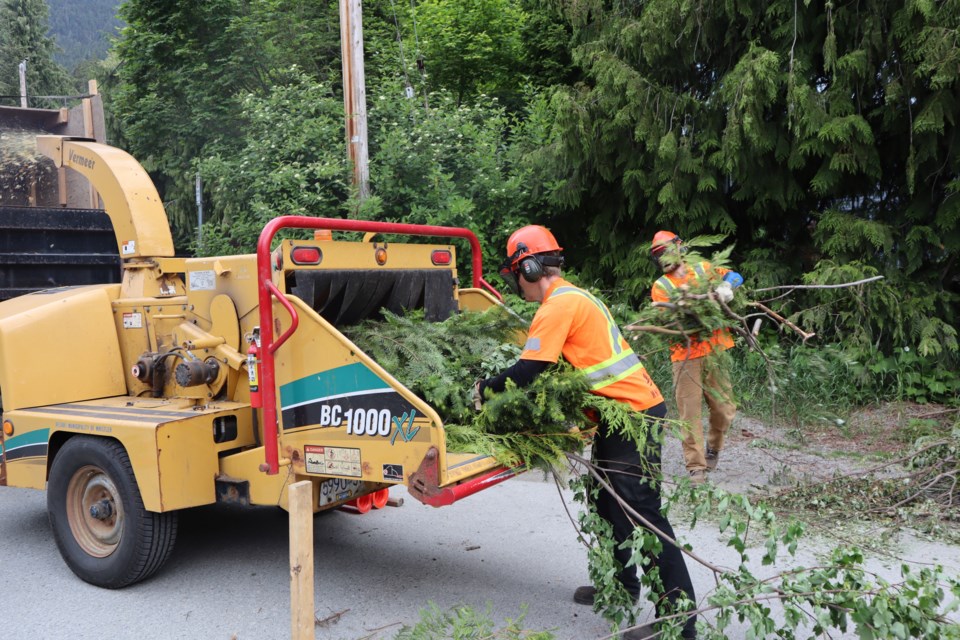Several weeks of rain will serve the forests surrounding Whistler well after an unspeakably dry summer, but work on wildfire prevention and mitigation is never far from mind at municipal hall.
“There’s a lot of awareness about the potential, but there’s not a lot of understanding. So that’s our responsibility,” said FireSmart coordinator Scott Rogers in a presentation to council on Nov. 2.
“It’s hard to not understand that wildfire is the threat when you see the news, and Lytton burns down, and we hit 40 degrees here in Whistler, and the forest is bone dry in April.”
On a scale of one to 10, awareness of the threat of wildfire in Whistler—which is classified as “wildfire risk class one,” with about $19 billion in assets at risk—is “probably a seven, and that’s a fairly good place to be,” Rogers said.
“People are aware and people are active, which is encouraging. So we just need to continue to advance that and support it. We’re making gains. Every year we’re better than we were the year before because of our focus and our activity. So we’re in a good place.”
That said, “we need to do more,” Rogers added.
Whistler’s FireSmart program undertook some new activity this year, working closely with FireSmart BC to deliver workshops and training to other programs throughout the province, Rogers said.
Though COVID-19 meant a few neighbourhood working days had to be rescheduled to next year, Whistler’s FireSmart program still managed to complete work days (removing vegetative hazards on private property) with 24 groups, which Rogers called “an excellent standard” for the RMOW to maintain.
“In the past five years we’ve done over 100 of these. We’re kicking butt, quite honestly,” he said. “Most jurisdictions are doing one or two, they may do five or six. So for us to do 24 is important to recognize.”
The program also serviced more than 240 properties with its community chipper days this year, and more than 800 in the last three years, Rogers said.
While the uptake and focus on the forest is encouraging, “it’s very important that we understand we need to start looking at the buildings, and the storage and material around the buildings,” he added. “And we’re seeing people are learning and people are starting to enact change, so it’s very positive.”
On a broader scale, the RMOW completed three fuel-thinning projects and part of a fourth in 2021, including 115 hectares along Cheakamus Lake Road, which is “a key fuel break for the southern boundary of our community,” said environmental stewardship manager Heather Beresford.
The other fuel-thinning projects were completed on Nesters Hill and near Whistler Secondary School, while a project near Taluswood is about half complete, and will be finished in the spring.
Looking further ahead, “we are working on updating the 2011 Community Wildfire Protection Plan, and we have a draft ready for the Community Wildfire Resiliency Plan, which is the new template that the province has announced,” Beresford said, adding that the RMOW’s Forest and Wildland Advisory Committee would review the draft on Nov. 10.
The RMOW is also developing a monitoring plan in response to concerns from some in the community over fuel thinning, Beresford said.
“This will help us understand what is happening when we do these thinning projects—what is the efficacy of these projects? How much does it reduce the wildfire behaviour?” she said.
“And then we could be adding that information to the body of literature for others to understand how these projects are assisting in reducing the wildfire behaviour and mitigating the effects.”
Council also endorsed a grant application worth $150,000 to the Union of BC Municipalities’ Community Resiliency Investment Program to help pay for ongoing wildfire mitigation efforts in 2022 at the Nov. 2 meeting.
If successful, the money will pay for FireSmart coordinators and operations such as chipper days, home and property assessments, education initiatives and more.
Whistler’s total annual FireSmart program budget is $525,000, $144,000 of which is covered by the provincial Resort Municipality Initiative program.
Find more info at whistler.ca/wildfire.




